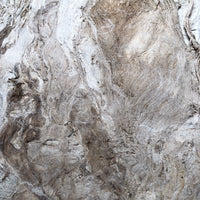Last Updated on:October 17th, 2024
There are various types of pigments, including natural pigments derived from nature and synthetic pigments developed through manufacturing technology. Recently, effect pigments have become more popularised and they are commonly used in everyday items as well as in industrial products.
The characteristics of effect pigments can vary significantly depending on the type; they may appear with pearlescent, metallic or lustrous qualities, and can showcase colors inspired by nature or vibrant artificial hues. The unique visual effects these pigments offer have captivated not only artists and designers but also a wide audience.
PIGMENT TOKYO carries effect pigments that can be used as paints when mixed with painting mediums (binders). In this article, we will focus on the [Ir] series, which has one of the broadest color ranges among the more than 200 types of effect pigments available in our store.
Characteristics of [Ir]
These pigments are made from thin sheets of natural mica that are coated with a fine layer of metal oxides.
There are over 30 color varieties available, each offering a range of visual effects, including smooth shades, high luminosity, polarizing qualities and transparency.
Among PIGMENT TOKYO's effect pigments, this series provides the widest array of variations. Their luminosity surpasses that of natural mica, leading to a greater perception of brilliance. Moreover, the result of polarizing pigments changes depending on the color underneath.
Let's take a look at the following two interference colors, "Scarab Red 9507" and "Rutile Red Pearl 215," which exhibit significant visual differences. Here are the results of the differences in pigment particles and their dispersion when made into paints, as well as how the color surface changes depending on the base colors used.
Comparison Between the Pigment Particles and Their Dispersion
Here is the comparison of the pigments in powder form without any binder or water.

Scarab Red 9507 appears to have a rich burgundy hue but it also produces a blue glow when light hits. Even in its powder form, you can observe the polarizing effect of the [Ir] series.
Furthermore, the accumulated particles appear black, while the dispersed particles have a reddish hint. The depth of the color shifts depending on the viewing angle.

Although the luminosity is more subdued, Rutile Red Pearl 215 creates a faint green and red glow when light hits the pigment. Moreover, the particle size is slightly larger than that of Scarab Red 9507, and this difference can be subtly felt when spread on paper.
In the following image, you can see the pigments, gum arabic and water being kneaded on a white ceramic plate.

Both Scarab Red 9507 and Rutile Red Pearl 215 produce red tones but their interference effects differ significantly, even after kneading into paints. In this case, both pigments blended relatively easily. However, since the specific gravity of effect pigments varies by type, we recommend adding Pigment Dispersant to the mixture if you struggle to mix the pigments thoroughly.
Changes of the Surface Colors Depending on Background Colors
The word "scarab" originates from ancient Egypt and refers to a type of golden beetle. This beetle was deeply connected to ancient Egyptian religion and art, making it a sacred symbol.
While most scarabs are black or brown, certain species display bright colors, iridescence or a metallic luster. When the pigment is used in paint, it reflects colors and luster reminiscent of these scarab beetles.

【Art Materials Used】
Color Material: [Ir] Scarab Red 9507 (PIGMENT TOKYO Original)
Binder: Gum Arabic Medium (Kusakabe)
Substrate: White... Bamboo Washi for Watercolor (Awagami Factory)
Black... Fine paper
Both the white and black papers produce green and crimson shimmers, which vary slightly with changes in lighting conditions. Although the black paper had a deeper color, can you see the difference caused by the polarizing effect?
Unlike other pigments, this unique beauty lies in the pigment's ability to display color changes depending on the angle of the light, transitioning from red to green, which are complementary colors on the color wheel.
[Ir] Rutile Red Pearl 215
In powder form, Rutile Red Pearl 215 looks like a white pigment with a hint of light pink but let's take a look at how the color changes.

【Art Materials Used】
Color Material: [Ir] Rutile Red Pearl 215(PIGMENT TOKYO Original)
Binder: Gum Arabic Medium (Kusakabe)
Substrate: White... Bamboo Washi for Watercolor (Awagami Factory)
Black... Fine paper
When exposed to strong light, a pale pink hue appears on white paper, while areas with weak light exposure display a subtle ashy pearly green. On the other hand, pink and reddish-purple tones can be seen more prominently on black paper.
This significant difference in color due to the polarization effect based on the background color suggests a range of possibilities to explore.
Furthermore, even identical color tones can be influenced differently by light, resulting in a wide variety of colors, from vibrant to muted polarized shades.
When comparing the paint on a white ceramic plate to the paint applied to paper, as mentioned in the "Comparison Between the Pigment Particles and Their Dispersion" paragraph, you will notice variations in sheen, color tone and saturation. This demonstrates that effect pigments can change tone not only based on the color of the substrate but also due to differences in materials and primers used.
While smoother surfaces may yield a more appealing sheen, I encourage you to experiment with various substrates, pigments and application techniques to enhance your own artistic expression.
For the substrate comparison sample, I used Bamboo Washi for Watercolor for the white background and commercially available fine paper for the black background. However, feel free to explore a broader range of materials.
Effective pigments possess hidden potential.
So I hope you get to delve into the world of light and color, and open new paths for your future creative expression!
Translated by Atsumi Okano, Nelson Hor Ee Herng
PIGMENT TOKYO Art Materials Experts

![Color & Light Effects that Illuminate Your Artwork [Ir]](http://pigment.tokyo/cdn/shop/articles/241015_ARTICLES_Ir-KV5_8668c38d-b6e3-462a-b80a-77c37b5986b6.jpg?v=1729138242&width=1100)





